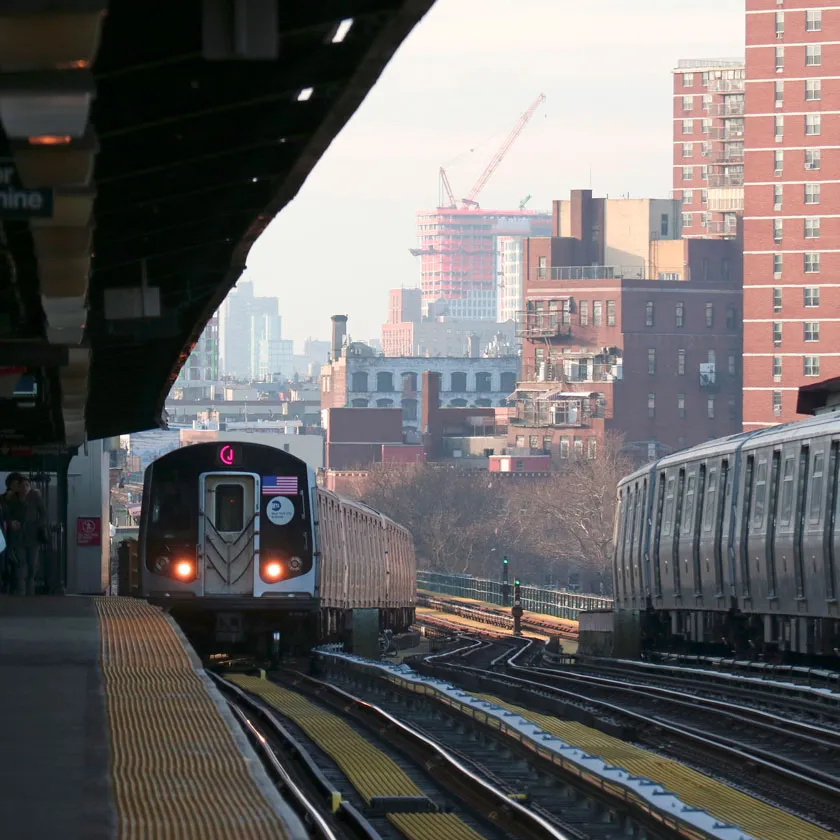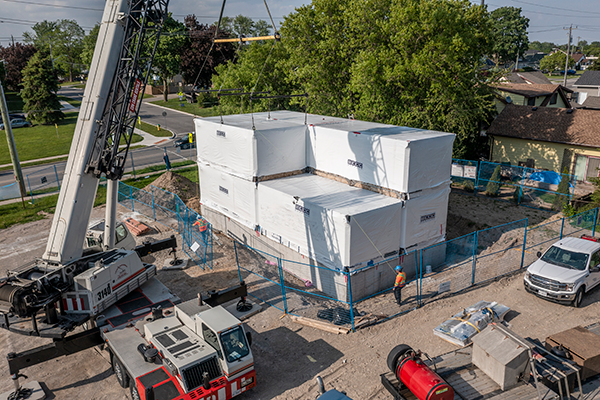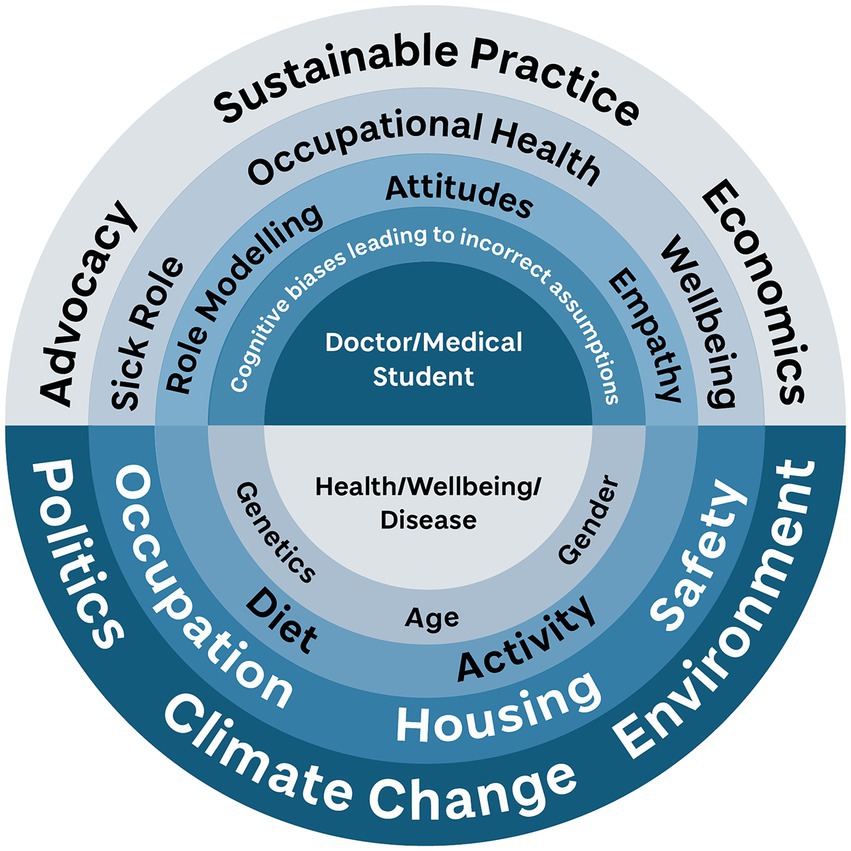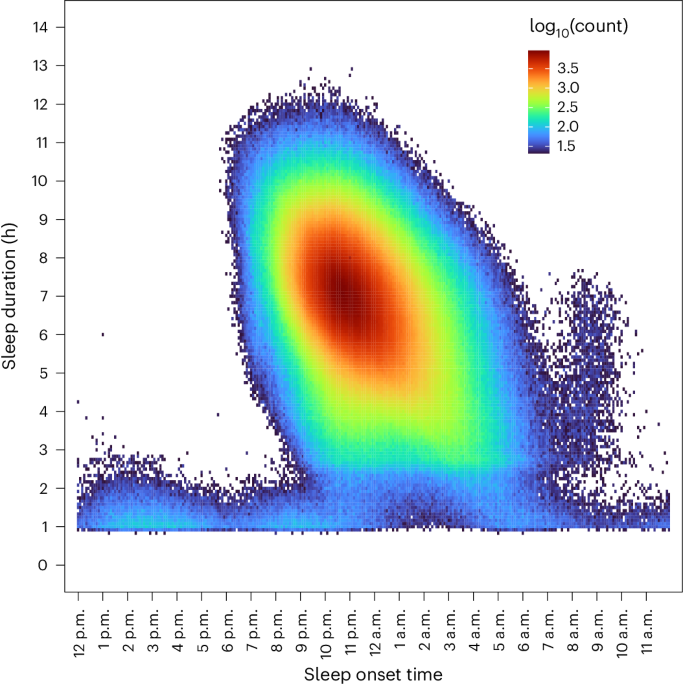Tackling America’s Housing Affordability Crisis: The Power of Zoning Reform
Amidst the growing housing affordability crisis in the United States, a new proposal seeks to tackle the issue head-on by reforming local land use regulations. The Center for American Progress highlights the need to overhaul outdated zoning laws that have historically restricted housing supply, exacerbating the crisis.
Understanding the Crisis
According to recent data, nearly half of all rental households in America are cost-burdened, spending over 30% of their income on rent. This financial strain is even more pronounced in areas with strong employment growth, where housing costs are highest. The paradox is clear: regions with the most economic opportunities present the greatest barriers to affordable housing.
The Role of Local Zoning
A significant contributor to the housing crisis is local zoning ordinances that limit the construction of new housing, particularly affordable options. Reforming these regulations is crucial to easing the housing cost burden. Possible reforms include allowing taller apartment buildings along transit corridors and reducing parking requirements.
However, reforming zoning is not a standalone solution. It must be complemented by federal, state, and local programs that fund low-income housing projects. The federal government could play a pivotal role by incentivizing local jurisdictions to undertake substantial zoning reforms through a proposed Building Opportunity program.
Incentivizing Change
The Building Opportunity program, as proposed, would offer flexible funding to local governments that commit to significant zoning reforms. This initiative builds on the Biden-Harris administration’s 2022 Housing Supply Action Plan and HUD’s Pathways to Removing Obstacles to Housing (PRO Housing) program.
The theory is that local political opposition, not technical planning capacity, is the primary barrier to zoning reform. By offering substantial federal funding in exchange for zoning changes, local governments could be motivated to break the political logjam and embrace more inclusive growth.
Grassroots Reform Efforts
Some cities have already started to amend their zoning codes to permit more diverse housing options. For instance, Minneapolis eliminated single-family zoning citywide, allowing for the construction of triplexes. Similarly, the state of Florida passed the Live Local Act, which preempts certain local zoning laws to encourage multifamily housing development.
These efforts, while promising, need to be scaled up nationwide. The proposed federal incentives could serve as a catalyst for widespread reform, allowing market forces to play a larger role in meeting housing needs.
Conclusion
Reforming local land use regulations is a critical step in addressing the housing crisis in America. While more permissive zoning will not solve the issue overnight, it is a necessary move towards allowing private developers to contribute to the housing supply. The federal government’s role in incentivizing these changes could be the key to unlocking new housing opportunities across the nation.

More Articles
Getting licensed or staying ahead in your career can be a journey—but it doesn’t have to be overwhelming. Grab your favorite coffee or tea, take a moment to relax, and browse through our articles. Whether you’re just starting out or renewing your expertise, we’ve got tips, insights, and advice to keep you moving forward. Here’s to your success—one sip and one step at a time!
AI: A Revolution in Healthcare’s Future
The Promise of AI in Healthcare
**AI** is not a distant dream but a present reality, already integrated into everyday life through virtual assistants like Alexa and Siri. However, its potential extends far beyond convenience, reaching into the intricate world of healthcare. According to the National Academy of Medicine, **AI** can significantly enhance patient outcomes, reduce healthcare costs, and improve population health.In radiology, for instance, **AI** accelerates cancer screening results, offering swift and accurate diagnoses. A notable application is in the analysis of polycystic kidney disease (PKD), where **AI** rapidly evaluates total kidney volume, a critical factor in predicting disease progression.
Cardiology and Risk Assessment
**AI’s capabilities** extend into cardiology, where it has demonstrated a remarkable ability to identify risks for conditions like left ventricular dysfunction before symptoms appear. This proactive approach allows for early intervention, potentially averting serious health crises. **AI tools** also detect coronary artery calcium, signaling the risk of heart attacks or strokes years in advance, thus offering a window of opportunity for preventive care.Beyond Diagnostics: AI in Public Health
**AI’s influence** is not confined to individual patient care. It plays a vital role in public health management, particularly in disease prevention and outbreak prediction. During the COVID-19 pandemic, **AI** could have analyzed internet search trends and social media data to anticipate outbreak hotspots, aiding public health officials in making informed decisions to curb the spread.AI as a Complement to Human Expertise
While **AI** shows promise in enhancing medical accuracy, such as in predicting mesothelioma survival and improving colonoscopy accuracy, it is not intended to replace healthcare professionals. Instead, **AI** serves as an invaluable assistant, managing routine tasks and sifting through vast volumes of medical literature, thus freeing doctors to focus on patient care.However, the integration of **AI** in healthcare is not without challenges. Concerns about bias in **AI algorithms**, if trained on non-representative data, and the dissemination of misinformation through **AI chatbots** underscore the need for effective regulation.
The Road Ahead
The future of **AI in healthcare** is bright, with exciting possibilities on the horizon. From remote health monitoring and early diagnosis of imperceptible conditions to selecting suitable clinical trials, **AI** stands to redefine the landscape of medical care. The Mayo Clinic is at the forefront of this innovation, striving to harness **AI’s potential** to create new methods for diagnosing, treating, predicting, preventing, and curing diseases.
As **AI** continues to evolve, its role in healthcare will undoubtedly expand, offering new tools and insights that promise to enhance both individual and public health outcomes.
Building an Integrated Approach to Real Estate Sustainability
In a revealing examination of the real estate sector’s sustainability efforts, a recent Deloitte report sheds light on the pressing challenges and strategic pathways for achieving environmental compliance. The report, titled “Building an Integrated Approach to Real Estate Sustainability,” highlights that nearly 60% of global real estate CFOs lack the necessary data, processes, or internal controls to comply with current environmental regulations.

To bridge this gap, Deloitte suggests that real estate firms must foster cross-departmental collaboration. Key stakeholders, including finance leaders, sustainability officers, engineers, and tax experts, should work in unison to align their strategies with both financial and sustainability goals. This integrated approach is vital for navigating the complex landscape of tax incentives and regulatory challenges, which are critical for achieving sustainability objectives.
Key Areas for Integration
- Tax and Regulatory Opportunities: The report emphasizes the importance of identifying incentives and addressing challenges. However, only 32% of firms plan to leverage tax-saving opportunities, indicating a significant area for growth.
- Risk and Financial Modeling: Prioritizing physical and transition risks is crucial for compliance and investment security. Conducting risk assessments can enhance understanding and strategy integration.
- Accounting and Reporting: With new regulations like the SEC climate rule, aligning sustainability with financial reporting is becoming increasingly essential.
- Strategy and Energy Sourcing: A focus on renewable energy sources is paramount, with companies like Slate Asset Management making substantial investments.
- Technology Integration: The adoption of smart technologies, such as IoT devices, is critical for monitoring consumption. Digital twins can optimize operations and streamline reporting.
The Deloitte report also underscores the need for real estate firms to align their energy sourcing strategies with tax incentives to enhance ROI while meeting sustainability targets. This alignment requires collaboration across various stakeholders, from IT and finance to developers and engineers, to build a robust infrastructure capable of supporting sustainability goals.
Looking Ahead
As environmental standards continue to evolve, the future of real estate sustainability will likely be shaped by regulatory changes, market expectations, and technological advancements. Real estate companies are urged to integrate sustainability into their core operations, leveraging industry-specific solutions to navigate complexities and maintain a competitive edge.
The Blockchain Revolution: Building the Future of Finance with DeFi
By embracing DeFi and the blockchain revolution, individuals can seize control of their financial futures. This new paradigm opens doors to innovative investment opportunities and fosters a more inclusive global economy. As highlighted in the original article from the London Daily News, the impact of DeFi is monumental, reshaping the very fabric of the financial world.
Understanding Blockchain Technology in Finance
Blockchain technology is at the heart of this transformation, providing a decentralized, secure, and transparent framework for transactions. Unlike traditional systems, blockchain’s distributed ledger records transactions across multiple computers, ensuring no single entity has control. This decentralization enhances security and fosters trust, as altering any entry requires consensus.
- Enhances security through cryptography, minimizing fraud risk
- Increases transparency, allowing real-time transaction verification
- Reduces costs by eliminating intermediaries
- Facilitates faster transactions for near-instant cross-border payments
The Purpose of DeFi Applications
In this new financial ecosystem, DeFi leverages blockchain technology to offer decentralized financial services. DeFi promotes a peer-to-peer (P2P) approach, eliminating the need for traditional gatekeepers. Services such as lending, borrowing, and investing become more transparent and user-controlled, as explored in the future of blockchain in finance.
How Does DeFi Work?
DeFi’s foundation in blockchain technology, particularly Ethereum, enables decentralization. Smart contracts, which are self-executing contracts, automate financial processes, removing the need for intermediaries and promoting accessibility, security, and transparency.
Reshaping the Future of Finance
The transformative power of DeFi lies in its ability to address the challenges of conventional financial systems. By minimizing the need for traditional intermediaries, DeFi streamlines transactions, reducing costs and enhancing efficiency. Platforms like Aave exemplify this by allowing borrowers to connect directly with lenders, bypassing banks.
Greater Accessibility
Smart Contracts Automation
Increase Security
New Financial Products
Programmable Money

Global Financial Inclusion
DeFi’s potential for global financial inclusion is immense, offering services to underbanked populations worldwide. By eliminating intermediaries and leveraging smartphones, people in rural areas gain access to financial opportunities previously unavailable.
As we navigate this blockchain revolution, investing in DeFi solutions becomes not only feasible but essential. Embracing DeFi unlocks unprecedented opportunities, reshaping the future of finance.
Artificial Intelligence: A New Frontier in Neurological Care
Artificial Intelligence: A New Frontier in Neurological Care
In a rapidly evolving medical landscape, artificial intelligence (AI) is emerging as a game-changer in the diagnosis and treatment of neurological emergencies. A recent comprehensive review published in Frontiers highlights the transformative potential of AI in neurology, particularly in acute scenarios like stroke and traumatic brain injury.Revolutionizing Diagnosis and Treatment
AI’s integration into neurology is not just a fleeting trend; it’s a significant shift in how healthcare professionals approach complex neurological disorders. Leveraging machine learning algorithms and deep learning models, AI systems can analyze vast datasets with unprecedented speed and accuracy. This capability is crucial in time-sensitive situations where every second counts, such as identifying candidates for thrombolytic therapy in stroke cases.
According to Lee et al. (2020), machine learning has already demonstrated its prowess in identifying strokes within a critical 4.5-hour window. Such advancements underscore AI’s potential to enhance patient outcomes by facilitating rapid decision-making.
AI in Neurological Imaging
The role of AI in diagnostic imaging is particularly noteworthy. Deep learning models, as discussed by Litjens et al. (2017), have been trained to interpret complex medical images, often outperforming human experts. This technology is pivotal in detecting early signs of neurological disorders, such as Alzheimer’s disease, as evidenced by Ardila et al. (2019).
Ethical and Practical Challenges
Despite its promise, the deployment of AI in healthcare is not without challenges. Ethical concerns, such as data privacy and algorithmic bias, must be addressed to ensure equitable patient care. The “black box” nature of AI systems often leaves clinicians and patients questioning the transparency of AI-driven decisions. As AI continues to integrate into healthcare, it is imperative to establish robust ethical guidelines and regulatory frameworks.
Furthermore, the practical implementation of AI in clinical settings requires significant investment in infrastructure and training. As highlighted by Shickel et al. (2018), predictive analytics in healthcare can revolutionize patient management, but only if healthcare providers are equipped to harness these technologies effectively.
Looking Ahead: Future Directions
The future of AI in neurology is bright, with emerging trends pointing towards more personalized and precise treatment strategies. The integration of AI with wearable devices and telemedicine platforms promises continuous monitoring and early intervention for chronic neurological conditions.
However, to fully realize AI’s potential, ongoing research and development are essential. Future studies should focus on creating more interpretable AI models and exploring their long-term efficacy in diverse healthcare settings.
In conclusion, AI is poised to redefine neurological care, offering new hope for patients and clinicians alike. As the field advances, it is crucial to balance innovation with responsibility, ensuring that AI technologies are deployed ethically and equitably across the healthcare spectrum.
Celebrating Commitment to Physician Well-being
Celebrating Commitment to Physician Well-being
In a significant move to combat **physician burnout**, the **American Medical Association (AMA)** has recognized 62 **health care organizations** through its Joy in Medicine™ Health System Recognition Program. These organizations, representing over 140,000 physicians, have been acknowledged for their innovative strategies aimed at reducing stress and enhancing mental health among doctors. This recognition underscores a broader commitment to fostering environments where physicians can thrive and rediscover the joy in their profession.
AMA President Bruce A. Scott, MD, emphasized the importance of addressing systemic issues rather than placing the burden of change on physicians themselves. He noted the growing national movement to transform healthcare work systems to tackle the root causes of **physician burnout**.
The recognized organizations join a distinguished cohort of 72 health systems from 2023, collectively representing over 230,000 physicians. This year’s honorees have set a high standard by prioritizing commitment, leadership, teamwork, and practice-environment efficiency.
Decline in Burnout Rates
Significantly, **physician burnout rates** have dropped below 50% for the first time since 2020. This decline highlights the effectiveness of ongoing efforts and the crucial role of programs like the Joy in Medicine™ Health System Recognition Program.Recognition Levels
The program offers three levels of recognition: **Bronze, Silver, and Gold**. This year, **El Rio Health** achieved Gold status, while 12 health systems earned Silver recognition, including **Bayhealth** and **Dayton Children’s Hospital**.Continued Advocacy and Support
The **AMA** remains at the forefront of advocacy for **physician well-being**, removing administrative burdens and providing real-world solutions. As Christine Sinsky, MD, AMA vice president of professional satisfaction, stated, “Reducing burnout requires health system leaders to invest in systems-based solutions that provide resources to match the demands placed on physicians.”For more details on recognized organizations and the program, visit the official AMA page.
Global Hospital Services Market Set for Substantial Growth
Global Hospital Services Market Set for Substantial Growth
The global hospital services market is undergoing a significant transformation, with projections indicating robust growth over the next decade. As of 2023, the market was valued at USD 13.1 trillion and is expected to soar to an impressive USD 24.1 trillion by 2033, boasting a compound annual growth rate (CAGR) of 6.3%. This optimistic forecast, reported by Market.us Media, is driven by advancements in medical technology, increased healthcare expenditures, and the rising prevalence of chronic diseases.Conclusion
In conclusion, the hospital services market is poised for robust growth, with advancements in technology and an increasing need for specialized healthcare services playing pivotal roles. While there are challenges to navigate, the overall market trajectory is positive, with North America expected to maintain its leading position in the coming years.Unlocking the Potential of Modular Construction in Ontario’s Housing Market
In the bustling realm of Ontario’s housing market, modular construction is emerging as a beacon of hope amid a pressing demand for new homes. However, as Albert Bendersky, vice-president of design at Hamilton’s BECC Modular Solutions, points out, several barriers must be dismantled to fully harness this innovative construction method.
Chief among these obstacles is the absence of formal pre-approval or recognition by provincial and municipal authorities for standardized modular units. The existing building code, described as inflexible, does not yet accommodate the revolutionary technologies that modular construction could bring to the fore.
In an effort to bridge these understanding gaps, BECC recently hosted a group of planners at its facility, coinciding with the annual Ontario Professional Planners Institute conference. During this event, Bendersky emphasized the potential of modular construction to meet various municipal and aesthetic requirements, stating, “We can achieve the same results that have been achieved before,” advocating for a shift towards new technological solutions in the sector.

The essence of resolving the housing crisis, Bendersky asserts, lies in the mass-production of high-quality buildings. This involves integrating 21st-century industrial technologies akin to those used in automobile and electronics manufacturing. BECC, for instance, leverages Hamilton’s high-grade steel as a key component in their process, although other materials like wood or concrete are also viable.
The manufacturing process at BECC begins with pre-cut and pre-drilled steel parts, assembling modules complete with wiring, piping, insulation, and more. This modular approach aims to significantly reduce time and costs, paralleling modern industrial efficiency.
Bendersky highlighted a current project for a California client to illustrate the efficiency of modular construction when supported by an effective approvals system. Unlike Ontario’s layered planning and political processes, California’s system allows for streamlined approvals, enabling projects to proceed without repetitive bureaucratic hurdles.
To truly enhance the adoption of modular construction in Ontario, Bendersky suggests the development of a pre-approval system by large municipalities. Such a system would expedite projects by alleviating some of the red tape associated with building permits, especially for small to mid-size developments.
The integration of new technologies into the building code is essential, as existing codes hinder progress by not recognizing the capabilities of modern construction methods, Bendersky explained.
In conclusion, BECC is on the cusp of further technological advancement with plans to introduce robotic systems, poised to enhance manufacturing speed and efficiency. As the industry becomes more sophisticated, sustainable construction standards like Passive Haus and net-zero should become achievable goals, mirroring traditional building achievements.
Despite these challenges, the sector is advancing rapidly with the help of Building Information Modelling (BIM) platforms and AI tools, enabling a more scientific approach to construction. Follow Don Wall on X/Twitter for ongoing updates in this rapidly evolving field.
The Future of Personalized Medicine: Bridging the Gap in Health Disparities

The Association of American Medical Colleges (AAMC) reports that while breast cancer mortality has decreased, Black women still face a 40% higher death rate compared to their White counterparts. This inequity is partly due to the fact that Black women are less frequently offered genetic screenings that could potentially save their lives.
Bridging the Gap
Efforts to rectify these disparities are underway. Initiatives like the Chan Zuckerberg Initiative’s Accelerate Precision Health program aim to expand research at historically Black colleges and universities (HBCUs). These programs focus on increasing the representation of diverse genetic profiles in medical research.Moreover, the NIH’s All of Us research program is building one of the largest and most diverse health databases in the world. This initiative seeks to understand how various factors such as environment and socioeconomic status influence health, with the ultimate goal of making precision medicine accessible to all communities.
Challenges and Responsibilities
Despite these promising efforts, systemic barriers remain. The lack of diverse representation in genetic studies, high costs of genetic testing, and limited outreach to marginalized communities hinder the equitable distribution of personalized medicine’s benefits. As the field continues to evolve, the urgency to address these challenges grows.Rick Kittles, PhD, of Morehouse School of Medicine, emphasizes that academic medical centers must commit to resolving inequities within their communities. This includes fostering trust and building relationships with underrepresented groups to ensure that the advancements in personalized medicine are inclusive and beneficial to all.
As personalized medicine continues to develop, the question remains: will it be a beacon of hope for all, or a gateway to new health disparities?
The Evolving Role of AI in Education: A Delicate Balance
The Evolving Role of AI in Education: A Delicate Balance
As the new semester unfolds, the profound influence of artificial intelligence (AI) on education and beyond is becoming increasingly evident. In a recent article from Marquette Today, Dr. Michael Zimmer, an associate professor of computer science and director of the Center for Data, Ethics and Society at Klingler College of Arts and Sciences, shares his insights on the transformative power of AI in the classroom.
AI’s Dual Nature: Opportunities and Challenges
AI is rapidly reshaping educational landscapes by automating routine tasks and personalizing learning experiences. Online textbook publishers, for instance, are leveraging AI to tailor content to individual students’ needs, facilitating a more customized educational journey. However, this technological advancement brings with it a set of challenges. The reliance on AI tools may inadvertently stifle critical thinking and problem-solving skills, as students might become overly dependent on automated solutions.Preparing Students for an AI-Driven World
Dr. Zimmer emphasizes the importance of equipping students with the skills necessary to navigate an AI-infused future. Teachers are increasingly focusing on digital literacy, ensuring students can critically assess AI technologies and understand the ethical implications associated with their use. This preparation is crucial as students enter a workforce where AI will play a significant role.Looking Ahead: A Balanced Perspective
While the potential of AI to automate mundane tasks and inspire creativity is undeniable, Dr. Zimmer urges caution against unbridled optimism. He advocates for a measured approach, recognizing both the benefits and limitations of AI. In the next 10 to 20 years, he predicts a “middle ground” where society will benefit from AI tools without allowing them to overshadow humanity’s core values and purpose.As we continue to explore the integration of AI in education, it is essential to strike a balance between harnessing its capabilities and maintaining the human element that is integral to learning and growth.
MedTech vs BioTech: The Future of Healthcare Innovation
MedTech vs BioTech: The Future of Healthcare Innovation
In the rapidly evolving landscape of healthcare, two fields stand at the forefront of innovation: MedTech and BioTech. While both are pivotal in enhancing patient care, they operate in distinct domains. MedTech focuses on developing medical devices and technologies for diagnosis and treatment, whereas BioTech leverages biological processes to create drugs and therapies. This article, based on insights from Netguru, explores the core differences between these fields and their impact on healthcare.Understanding MedTech and BioTech
MedTech, short for Medical Technology, encompasses a wide range of devices and technologies used in healthcare settings. From pacemakers and insulin pumps to advanced imaging systems and robotic surgery tools, MedTech innovations are crucial in diagnosing and treating patients effectively. These technologies are designed to enhance the accuracy and efficiency of medical procedures, ultimately improving patient outcomes.On the other hand, BioTech, or Biotechnology, involves the use of living organisms or their systems to develop health-related products and technologies. This field is heavily invested in drug development, genetic engineering, and creating new therapies. BioTech companies are pioneering personalized medicine and targeted treatments, offering new hope for patients with complex health conditions.
Key Differences and Challenges
While both sectors are experiencing rapid growth, they face distinct regulatory challenges. MedTech products often require less extensive clinical trials compared to BioTech innovations, which involve longer, more rigorous processes due to the complex nature of biological processes. This regulatory landscape shapes the innovation strategies and market dynamics of each field.Emerging technologies like AI and gene editing are set to revolutionize both MedTech and BioTech. AI plays a crucial role in speeding up drug discovery and analyzing genetic information, making therapies more effective and personalized. Meanwhile, gene editing technologies like CRISPR offer potential solutions for genetic disorders, paving the way for more effective treatments.
Market Trends and Growth
The MedTech market was valued at $456.9 billion in 2020 and is projected to reach $800 billion by 2030. Innovations in telemedicine and wearable devices are transforming patient monitoring, enabling real-time health management and intervention. The increasing demand for remote monitoring devices reflects a shift towards more accessible healthcare options.In contrast, the BioTech market continues to grow, driven by the potential for groundbreaking therapies and personalized medicine. The first CRISPR-based therapy approved for treating genetic blood disorders marks a significant milestone in gene therapy.
Opportunities for Innovation
Despite the challenges, both fields offer immense potential for innovation. AI-driven diagnostics and next-generation gene therapies are emerging technologies that promise to revolutionize healthcare. For instance, Merck’s AI R&D Assistant has demonstrated the potential of AI to streamline research processes, completing tasks under budget and within deadlines.Moreover, partnerships like the one with Nodus Medical have resulted in digital assistant tools for surgical teams, enhancing efficiency and reducing stress.
Impact on Healthcare Providers and Patients
Advancements in MedTech and BioTech are transforming healthcare delivery, improving patient experiences and outcomes. Telemedicine usage surged during the COVID-19 pandemic, highlighting its value in providing healthcare access. BioTech plays a crucial role in advancing healthcare through genetic research and the development of personalized medications.Future Outlook
The future of MedTech and BioTech is bright, with emerging technologies and potential breakthroughs set to revolutionize healthcare. AI-driven diagnostics, next-generation gene therapies, and advanced biomaterials are poised to transform the landscape, offering new possibilities for healthcare innovation.As we look ahead, the journey of innovation continues, bringing us closer to a future where personalized and effective healthcare is accessible to all. “`
Nanomedicine Market Poised for Explosive Growth
Nanomedicine Market Poised for Explosive Growth
The nanomedicine market is set to experience a remarkable expansion, projected to surge from USD 223.6 billion in 2023 to a staggering USD 634.2 billion by 2032. This growth trajectory, highlighted in a recent GlobeNewswire article, is fueled by advancements in drug delivery systems and the increasing prevalence of chronic diseases.Revolutionizing Drug Delivery
The rise in chronic conditions such as cancer and diabetes has intensified the demand for innovative drug delivery systems. Nanotechnology has emerged as a key player, offering targeted therapies with enhanced efficacy and reduced side effects. This technological leap is not only transforming treatment protocols but also attracting significant interest from the scientific community and healthcare practitioners.
Collaborations Driving Innovation
The surge in the nanomedicine market is underpinned by robust collaborations between pharmaceutical giants and academic institutions. These partnerships are paving the way for groundbreaking research and development, resulting in a steady influx of nanomedicine products into the market. Notable players such as Johnson & Johnson, GE Healthcare, and Pfizer are at the forefront of this innovation wave.

Regional Insights
North America currently dominates the nanomedicine landscape, thanks to substantial investments in research and development, coupled with a strong presence of leading pharmaceutical companies. However, the Asia-Pacific region is poised for the fastest growth, driven by a surge in demand for affordable healthcare solutions and significant advancements in healthcare infrastructure.Recent Developments
The market has witnessed a flurry of activity with the launch of nanoparticle-based drugs, FDA approvals for new devices, and the unveiling of nanotube-based scaffolds for tissue engineering. These developments underscore the dynamic nature of the nanomedicine sector and its potential to revolutionize healthcare.
For those interested in a deeper dive into the market dynamics, the full report is available for purchase here. For inquiries or to speak with an analyst, visit this link.
U.S. Economy Shows Resilience Amid Upward Revisions
U.S. Economy Shows Resilience Amid Upward Revisions
The U.S. economy continues to demonstrate its resilience, as highlighted in a recent report by Freddie Mac. The Bureau of Economic Analysis (BEA) confirmed a 3% GDP growth for the second quarter of 2024, maintaining its previous estimates. This steady growth is supported by a robust labor market, with September witnessing a significant addition of 254,000 payroll jobs. The cumulative job growth throughout 2024 aligns with pre-pandemic averages, showcasing the economy’s strength.Inflation and Federal Reserve’s Monetary Policy
Inflationary pressures have been easing, with the Federal Reserve implementing a rate cut to steer the economy towards its inflation targets. This monetary policy shift is expected to bolster consumer spending and credit performance, fostering optimism for a soft economic landing.Housing Market: A Gradual Awakening
The housing market is showing signs of life, as mortgage rates hit a two-year low in late September. Despite this, August saw a 2.9% decline in home sales, indicating ongoing challenges for first-time homebuyers. The market’s recovery is hindered by affordability issues and limited supply, yet the demographic tailwind from millennials suggests potential growth.First-Time Homebuyers: A Rising Force
First-time homebuyers are becoming increasingly prominent in the housing market. This trend is fueled by the financial empowerment of younger adults and the mortgage lock-in effect that has cooled resale activity. According to the Freddie Mac report, the share of first-time homebuyers has been on the rise since the pandemic, with these buyers navigating complex market dynamics and evolving geographic preferences.Economic Outlook: Cautious Optimism
Freddie Mac projects continued economic growth, albeit at a slower pace. The housing market is expected to experience modest gains, driven by demographic factors and a gradual easing of mortgage rates. However, the supply-demand imbalance remains a core issue, posing potential challenges to sustained growth.For more in-depth insights, explore the comprehensive report available on Freddie Mac’s research page.
Modernizing Medical Education: Embracing Public Health at the University of Dundee
Modernizing Medical Education: Embracing Public Health at the University of Dundee
In a world where healthcare and its education are undergoing seismic shifts, the University of Dundee is pioneering a transformative approach. The institution is integrating public health into its medical curriculum, responding to the rapid technological, political, and social changes reshaping the medical landscape. This initiative is detailed in a recent article published by Frontiers.The article underscores the urgent need for medical education to evolve, highlighting the challenges posed by technological advancements, curriculum overload, and evolving medical practices. As non-communicable diseases rise, there’s a compelling economic argument for preventive medicine, which even corporations recognize. The University of Dundee’s curriculum overhaul aims to produce graduates ready for the demands of modern healthcare, emphasizing public health’s critical role.
The Role of Technology
Technological advancements, particularly in artificial intelligence and machine learning, are reshaping healthcare delivery. However, these innovations have yet to make a significant impact on medical education. The Topol review highlighted potential future changes, but current curricula lack comprehensive teaching on these topics. Dundee’s program addresses this gap, preparing students to navigate a tech-driven healthcare environment.Curriculum Overload
Medical students face daunting amounts of information, with knowledge potentially doubling every few months. Standardized assessments and shared curricula are becoming more prevalent, emphasizing core scientific knowledge. Yet, there’s a growing recognition of the need for doctors to understand interpersonal communication, leadership, and teamwork. Dundee’s curriculum seeks to balance these elements, moving from a micro to a macro perspective.Adapting to New Medical Practices
The role of doctors is changing, influenced by global health priorities and societal expectations. The COVID-19 pandemic highlighted the need for robust healthcare systems and the challenges of misinformation. Dundee’s curriculum aims to equip students with the skills to navigate these shifts, fostering adaptability and resilience.Curriculum Review and Implementation
Dundee’s curriculum review, initiated before the pandemic, aims to facilitate transitions for learners, especially those from non-traditional backgrounds. Using the double diamond design methodology, the review involved stakeholders from various disciplines. The curriculum introduces two key strands: “The Bigger Picture” and “The Dundee Doctor.”
The Bigger Picture emphasizes public health, encouraging students to understand social determinants of health and their role as healthcare providers. It integrates public health and behavioral sciences, fostering a deeper understanding of healthcare’s broader context.
The Dundee Doctor represents the unique qualities of Dundee graduates, focusing on professional development and adaptability. It serves as a guiding framework for curriculum implementation, ensuring alignment with the institution’s values.
Challenges and Future Directions
Implementing changes in a constrained curriculum like medicine is challenging. Dundee’s approach aims for a “quiet revolution,” balancing core and elective elements to provide diverse learning opportunities. Formal evaluation of the new curriculum is underway, with anecdotal feedback indicating positive reception.As healthcare continues to evolve, Dundee’s curriculum is designed to adapt, preparing students for future challenges. The article posits that medical education must continuously renew itself, fostering adaptable, socially conscious doctors.
Institutional DeFi: Navigating the Financial Frontier
Institutional DeFi: Navigating the Financial Frontier
In the rapidly evolving world of finance, Decentralized Finance (DeFi) is emerging as a transformative force, reshaping the landscape of traditional banking and investment strategies. The whitepaper titled “Institutional DeFi: Navigating the Landscape” offers a comprehensive analysis of this dynamic sector.

Authored by industry experts, including Hagen Weiss, Counsel at Dentons for Digital Finance, Stefan Grasmann, and Christoph Hock, this publication delves into the challenges, opportunities, and future directions of DeFi, offering valuable insights for financial institutions eager to explore this new terrain.
Understanding DeFi’s Impact
DeFi platforms are revolutionizing financial services, affecting everything from asset management to banking and compliance. This transformation is driven by the transparency and efficiency of blockchain technology, which introduces innovations like smart contracts and tokenization.
Technological Advancements
Blockchain technology is at the heart of DeFi, enabling transparent and efficient financial operations. The paper highlights key advancements, including the emergence of smart contracts and the growing trend of tokenization.
Strategic Adaptation for Institutions
For traditional financial institutions, adapting to DeFi strategies is crucial. By integrating these innovative approaches, institutions can enhance operational efficiency and improve customer satisfaction.
Regulatory Considerations
Navigating the regulatory landscape is a significant challenge for DeFi. The whitepaper provides a thorough review of the current regulatory environment, offering strategic recommendations for compliance and integration.
Future Outlook
Looking ahead, the potential developments in DeFi promise profound implications for the financial industry. The publication explores these possibilities and outlines preparatory strategies for institutions to stay ahead of the curve.
For those interested in a deeper dive into this transformative sector, the whitepaper is available for download here.
Unmasking The Banking Sector’s Vulnerability To Cyber Threats
Unmasking The Banking Sector’s Vulnerability To Cyber Threats
In a world where digital threats loom large, the banking sector finds itself at a critical juncture. A recent story shared by an acquaintance, Dave, underscores the pervasive risk of cyberattacks that banks face today. Dave, who works in the banking sector, was caught off guard by a phishing attempt that seemed legitimate. Fortunately, it was a security test, but it highlighted a glaring vulnerability.
According to a Trend Micro report, the first half of 2021 saw an alarming 1,300% increase in ransomware incidents targeting banks. This surge is a wake-up call for financial institutions to reassess their cybersecurity strategies.
Challenges in Banking Cybersecurity
The banking sector’s reliance on outdated systems and slow adoption of cloud technologies are significant hurdles. As Dave pointed out, “Regulations make banks cautious, but this caution leaves us exposed.” This cautious approach has led to systemic flaws that cybercriminals exploit.
Phishing, ransomware, and advanced persistent threats (APTs) are the tools of choice for cybercriminals. These attacks don’t just aim for financial gain; they target sensitive data, which can be weaponized for future attacks or extortion.
Proactive Measures for Enhanced Security
To combat these threats, banks must adopt a proactive cybersecurity posture. Implementing a zero-trust framework—where trust is never assumed, even within the organization—can significantly enhance security. This approach involves verifying every user, device, and application, irrespective of their location.
In addition to zero trust, leveraging advanced tools like remote browser isolation (RBI) can provide an extra layer of protection. RBI ensures that web content is executed in a secure environment, preventing potential malware from reaching users’ devices.

These strategies form the essential toolbox the banking sector must revisit to bolster its defenses against evolving cyber threats. As cybercriminals become more sophisticated, banks must innovate and ensure employees are well-trained to stay ahead.
For more insights, visit the full article on Forbes.
AI’s Transformative Role in Healthcare Diagnostics
AI’s Transformative Role in Healthcare Diagnostics
In a rapidly evolving landscape, artificial intelligence (AI) is reshaping the very fabric of healthcare diagnostics. As highlighted in a recent Forbes article, AI’s integration into healthcare is not just a technological advancement but a revolution in patient care.
The Power of Machine Learning
At the heart of this transformation is machine learning (ML), a subset of AI that excels in processing complex datasets. From big data analysis to pattern recognition, ML is pivotal in identifying disease markers that might otherwise remain hidden. This capability allows for earlier detection of diseases and the development of personalized treatment plans.- Insights from Diverse Datasets: AI can synthesize data from molecular biomarkers, wearables, and lifestyle factors, offering a comprehensive view of patient health.
- Early Disease Detection: AI-powered tests enhance sensitivity, allowing for proactive management of diseases.
- Personalized Care: By analyzing unique biomarkers, AI helps tailor interventions, minimizing trial-and-error in treatments.
Ethical and Security Considerations
However, the journey is not without challenges. Ethical considerations, such as bias in data and potential misdiagnoses, are critical. As the article emphasizes, ensuring data integrity and patient privacy is paramount. Organizations must implement robust data governance and cybersecurity measures to protect sensitive patient information.Collaborative Efforts for a Healthier Tomorrow
The call to action is clear: technology leaders must forge alliances across disciplines, bringing together the strengths of tech firms, healthcare entities, and academia. This collaboration is essential for driving patient-centered innovation and ensuring the ethical deployment of AI technologies.As we stand on the cusp of a new era in healthcare, AI is not merely a tool but a catalyst for precision medicine. By acting decisively and ethically, we can harness AI’s potential to create a healthier future for all.
Innovative Recruitment Strategies to Combat Nursing Shortages
**Nursing vacancies** have surged to 17%, more than doubling pre-pandemic levels, prompting hospitals to go beyond mere salary increases and benefits enhancements. According to a recent Medscape article, hospitals are enticing nurses with substantial **signing bonuses**, **flexible work schedules**, and other creative incentives.
Signing Bonuses and Flexible Scheduling
Among the most eye-catching incentives are **signing bonuses**, with nearly 18% of job openings advertising this perk. The average **signing bonus** for registered nurses (RNs) has soared above $11,000. A standout example is Palomar Health, which offered eligible RNs a staggering $100,000 bonus, paid over three years.
Hospitals are also embracing **flexible scheduling**. This approach is not only attractive to new and experienced RNs but could also lure back nurses who have left clinical practice. The American Nurses Foundation report highlights that 45% of nurses who exited clinical roles would consider returning if self-scheduling were implemented.
Hiring Beyond Borders
Despite these enticing offers, some hospitals still struggle to fill positions, turning to **international recruitment**. Data from KFF shows that 32% of hospitals hired foreign-educated RNs in 2022, a significant increase from 2010. However, Jennifer Mensik Kennedy, President of the American Nurses Association, warns that relying on **international recruitment** is not a sustainable long-term solution. She advocates for focusing on **retention** through fostering healthy work environments and updating payment models.
Retention: The Other Half of the Equation
**Retaining nursing staff** is equally crucial. A significant portion of new nurses—33%—leave the profession within two years. To combat this, many hospitals have launched **retention programs**. Lifepoint Health’s Nurse Residency Program is one such initiative, offering mentorship and training to help new graduates transition into clinical practice. This program has successfully recruited 750 new nurses, and plans are underway for a two-year fellowship program to further support professional development.
The Reimagining Nursing Initiative by the American Nurses Foundation aims to modernize nurses’ reimbursement structures, ensuring they feel valued and adequately compensated.
In conclusion, attracting and retaining **top nursing talent** goes beyond merely filling vacancies. It is about building a healthcare system where nurses can thrive, ultimately benefiting the communities they serve.
The Role of Telehealth, AI, and Wearables in Modern Healthcare
The Role of Telehealth, AI, and Wearables in Modern Healthcare
In an era where technology is reshaping every facet of our lives, healthcare stands at the forefront of this digital revolution. As we delve into 2024, the integration of telehealth, AI, and wearable technologies is setting new benchmarks in patient care and accessibility.Telehealth: A Game Changer
Telehealth has emerged as a pivotal force in modern healthcare, dramatically transforming the delivery of medical services. The COVID-19 pandemic acted as a catalyst, with a reported 154% increase in telehealth visits during the last week of March 2020 compared to the same period in 2019. This surge underscores telehealth’s scalability and versatility, especially in mental health services, where virtual care has become indispensable.
Moreover, the financial implications of telehealth are profound. A study in the American Journal of Emergency Medicine highlighted cost savings through reduced non-urgent emergency department visits. According to a McKinsey report, up to $250 billion of U.S. healthcare spending could be virtualized, showcasing telehealth’s potential to revolutionize healthcare economics.
Cross-industry Applications
The influence of telehealth extends beyond traditional healthcare. In education, it bridges the gap between medical knowledge and practical application, as evidenced by a Journal of Medical Internet Research study on telehealth simulation training. Additionally, corporate wellness programs are increasingly incorporating telehealth, enhancing employee well-being and productivity.
Technological Integration: No-Code and Low-Code Platforms
The integration of No-Code (NC) and Low-Code (LC) platforms is another transformative trend in healthcare. These platforms enable rapid development of digital solutions, crucial for adapting to evolving healthcare scenarios. A study in the Healthcare Management Review found that NC and LC platforms could accelerate clinical application development by 50-70%, significantly reducing time-to-market.
Financially, these platforms are a boon for healthcare organizations facing budget constraints, with reports indicating up to a 20% reduction in application development costs.
Personalized Telehealth: Enhancing Patient Experience
Personalization in telehealth is key to enhancing patient and consumer experiences. Tailoring services to individual preferences not only improves patient satisfaction but also boosts adherence and outcomes in chronic disease management. A study in Diabetes Technology & Therapeutics demonstrated that personalized telehealth coaching significantly improved glycemic control compared to standard care.
Future Prospects
Looking ahead, two compelling developments are poised to redefine healthcare:
- AI-driven Diagnostics and Personalized Medicine: AI and Machine Learning are enhancing diagnostic accuracy and treatment efficacy, with expectations of significant advancements in early disease detection and personalized treatment plans by 2024.
- Wearable Technology for Chronic Disease Management: Wearable devices are transforming patient monitoring, enabling timely interventions and potentially reducing hospital costs and readmission rates.
As we navigate this technological leap, the emphasis on equitable access to digital health by organizations like the World Health Organization highlights the need for inclusive and ethical technology deployment. The healthcare industry is on the brink of a new epoch, where technology plays a central role in shaping a healthier, more connected world.

Unraveling the Ties Between Sleep and Chronic Disease: Insights from Wearable Technology
Unraveling the Ties Between Sleep and Chronic Disease: Insights from Wearable Technology
In a groundbreaking study published in Nature, researchers have delved into the intricate relationship between sleep patterns and chronic disease risk, using data harvested from commercial wearable devices like Fitbit. This study, part of the All of Us Research Program, harnesses the power of long-term monitoring to paint a comprehensive picture of how sleep impacts health over time.The researchers meticulously analyzed the sleep data of thousands of participants, focusing on various metrics such as sleep stages, duration, and regularity. The findings underscore a significant association between these sleep patterns and the incidence of chronic diseases, including obesity, hypertension, and psychiatric disorders.

The study’s results are not only a testament to the potential of wearable technology in health monitoring but also a call to action for public health initiatives. By tracking sleep patterns over extended periods, wearables provide a unique opportunity to observe the long-term effects of sleep on health, offering valuable insights for both public health policies and individual health management.
As noted in the original article, this research builds on previous studies, such as those by Ayas et al. on sleep duration and coronary heart disease, and Cribb et al. on sleep regularity and mortality. These studies have laid the foundation for understanding the critical role sleep plays in overall health.
Wearables: A New Frontier in Health Monitoring
The use of devices like Fitbit has revolutionized the way we approach health monitoring. By providing continuous, objective data, these devices allow researchers to conduct longitudinal studies that were previously impractical due to cost and logistical constraints. This paradigm shift is opening new doors for understanding the complex interactions between lifestyle factors and health outcomes.The implications of this study are far-reaching. For individuals, it highlights the importance of maintaining healthy sleep habits as a preventive measure against chronic diseases. For healthcare providers, it emphasizes the potential of integrating wearable data into routine care, enabling more personalized and proactive health management.
Conclusion
In conclusion, the study published in Nature offers a compelling argument for the integration of wearable technology in health research and management. By shedding light on the profound impact of sleep on chronic disease risk, it provides a roadmap for future research and underscores the importance of sleep in maintaining overall health. As we continue to embrace technology in healthcare, the insights gained from such studies will be invaluable in shaping a healthier future.Precision Medicine Market: A Tailored Approach Revolutionizing Healthcare
Precision Medicine Market: A Tailored Approach Revolutionizing Healthcare
The global precision medicine market is experiencing a remarkable surge, with its valuation projected to skyrocket from USD 83.80 billion in 2023 to USD 207.80 billion by 2032, boasting a compound annual growth rate (CAGR) of 10.8%. This growth is primarily driven by the increasing demand for personalized treatment strategies that leverage advanced technologies like genomics, proteomics, and bioinformatics to provide more effective and precise healthcare solutions. Global Trends & Drivers:
The precision medicine market has witnessed a significant expansion in research and development activities, especially following the COVID-19 pandemic. The pandemic underscored the necessity for individualized treatment regimes, leading to increased investments in precision medicine. The shift towards integrating cell and gene therapies, coupled with regulatory approvals for novel treatments, further signals promising growth prospects.
Regional Insights:
North America remains at the forefront, dominating the market with a share of 50.91% in 2023. This dominance is attributed to the region’s advanced healthcare infrastructure and a high incidence of chronic diseases, such as cancer, which propels the demand for personalized treatments. According to the Centre for Disease Control and Prevention (CDC), the U.S. reported an estimated 1,603,844 new cancer cases in 2020, highlighting the critical need for tailored healthcare solutions.
Europe holds the second-largest market share, driven by significant advancements in biomarker testing and diagnostics. The region’s superior healthcare infrastructure and increasing healthcare expenditure contribute to its market growth. Meanwhile, Asia Pacific is poised for expansion, fueled by population growth, rising disease burden, and government support for healthcare innovations.
Key Players and Collaborations:
The competitive landscape of the precision medicine market is characterized by strategic partnerships and collaborations among key industry players. Companies like Illumina, Inc., Agilent Technologies, Inc., and Thermo Fisher Scientific Inc. are at the forefront, expanding their presence through innovative products and collaborations with research institutions. Notably, in July 2023, Agilent Technologies, Inc. partnered with Institut Curie to launch a new kit for identifying vital genetic abnormalities causing cancer.
Future Outlook:
The precision medicine market is on the cusp of a transformative journey. With increasing governmental and private investments, the demand for precision medicine is expected to rise steadily. The commitment to addressing chronic conditions, coupled with strategic industry collaborations and advanced diagnostic tools, will sustain market growth. Moreover, the integration of AI in healthcare systems is set to revolutionize the precision medicine landscape.
Conclusion:
As the precision medicine market continues to evolve, its promise of personalized healthcare solutions becomes increasingly tangible. The market’s trajectory indicates robust growth, driven by the ongoing demand for customized treatment approaches that effectively manage chronic diseases. For more insights on the precision medicine market, visit the original article.
Global Trends & Drivers:
The precision medicine market has witnessed a significant expansion in research and development activities, especially following the COVID-19 pandemic. The pandemic underscored the necessity for individualized treatment regimes, leading to increased investments in precision medicine. The shift towards integrating cell and gene therapies, coupled with regulatory approvals for novel treatments, further signals promising growth prospects.
Regional Insights:
North America remains at the forefront, dominating the market with a share of 50.91% in 2023. This dominance is attributed to the region’s advanced healthcare infrastructure and a high incidence of chronic diseases, such as cancer, which propels the demand for personalized treatments. According to the Centre for Disease Control and Prevention (CDC), the U.S. reported an estimated 1,603,844 new cancer cases in 2020, highlighting the critical need for tailored healthcare solutions.
Europe holds the second-largest market share, driven by significant advancements in biomarker testing and diagnostics. The region’s superior healthcare infrastructure and increasing healthcare expenditure contribute to its market growth. Meanwhile, Asia Pacific is poised for expansion, fueled by population growth, rising disease burden, and government support for healthcare innovations.
Key Players and Collaborations:
The competitive landscape of the precision medicine market is characterized by strategic partnerships and collaborations among key industry players. Companies like Illumina, Inc., Agilent Technologies, Inc., and Thermo Fisher Scientific Inc. are at the forefront, expanding their presence through innovative products and collaborations with research institutions. Notably, in July 2023, Agilent Technologies, Inc. partnered with Institut Curie to launch a new kit for identifying vital genetic abnormalities causing cancer.
Future Outlook:
The precision medicine market is on the cusp of a transformative journey. With increasing governmental and private investments, the demand for precision medicine is expected to rise steadily. The commitment to addressing chronic conditions, coupled with strategic industry collaborations and advanced diagnostic tools, will sustain market growth. Moreover, the integration of AI in healthcare systems is set to revolutionize the precision medicine landscape.
Conclusion:
As the precision medicine market continues to evolve, its promise of personalized healthcare solutions becomes increasingly tangible. The market’s trajectory indicates robust growth, driven by the ongoing demand for customized treatment approaches that effectively manage chronic diseases. For more insights on the precision medicine market, visit the original article.
U.S. Wearable Medical Devices Market: Growth Trends and Future Prospects
U.S. Wearable Medical Devices Market: A Surge in Growth
The U.S. wearable medical devices market, currently valued at an estimated $11.45 billion in 2023, is set to experience an astronomical rise to approximately $112.67 billion by 2033. This projection, reported by BioSpace, highlights a compound annual growth rate (CAGR) of 25.69% from 2024 to 2033.Technological Advancements and Market Leaders
The market’s growth is fueled by technological advancements and a heightened consumer focus on health and wellness. Major players such as Apple Inc., Fitbit Inc., and Garmin Ltd. are at the forefront, introducing innovative products like smartwatches and fitness trackers. Notably, Apple has unveiled mental health and vision health features, enhancing the Apple Watch’s capabilities in tracking anxiety, depression, and vision health, thus setting a competitive standard in the industry.Dominance of Diagnostic Devices
The diagnostic devices segment is leading the market, driven by the increasing demand for personalized medicine and remote patient monitoring. These devices offer cost-effective solutions and real-time health data, facilitating early detection and management of health issues.North America’s Leading Role
North America, accounting for 42.11% of the revenue share in 2023, remains a dominant force in the wearable medical devices market. The region’s emphasis on preventive healthcare and consumer interest in wellness continues to propel its leading position.Future Prospects and Regional Insights
With the market poised for significant growth, the future of wearable technology in healthcare looks promising. The integration of real-time health monitoring and preventive care strategies is revolutionizing healthcare delivery and management. As the market expands, consumer-grade wearable devices are expected to see a surge in demand, driven by technological advancements and a proactive approach to health monitoring.For further insights and detailed analysis, the full report is available at Nova One Advisor.
The Future of Real Estate Market: What Lies Ahead?
The Future of Real Estate Market: What Lies Ahead?
The real estate market is on the brink of transformation, captivating the attention of buyers, sellers, investors, and industry professionals. As we look toward the end of 2024, experts predict a shift in the landscape, particularly with home prices expected to decline due to increased inventory levels.
One of the driving forces behind this shift is the anticipated stabilization or reduction of mortgage rates, which will make home ownership more accessible. Additionally, a push for eco-friendly homes and the integration of advanced technologies is set to reshape the market.
Key Insights from Expert Forecasts
- Economic Conditions and Housing Affordability: Housing affordability remains a central concern. A report by Bankrate highlights that high prices and mortgage rates currently hinder many potential buyers. However, with expected price decreases and mortgage rates dropping to around 6.6% by late 2024, purchasing power is likely to improve.
- Shift in Supply and Demand Dynamics: The real estate market is predicted to experience a rise in new homes, particularly in suburban and rural areas. This surge in supply is expected to balance market conditions, allowing buyers to choose from a wider selection of properties, as noted in U.S. News.
- The Role of Technology: Technological advancements, such as virtual reality tours and blockchain for transactions, are expected to streamline real estate processes. PwC remarks these innovations will enhance transaction efficiency and user experience.
- Emphasis on Sustainability: There is a growing trend toward sustainable living, with buyers increasingly favoring eco-friendly developments, as remarked by the Global Wellness Institute. This trend may encourage more developers to incorporate sustainable features in their projects.
- Changes in Residential Preferences: Remote work is influencing residential choices, with individuals opting for suburban or rural areas renowned for lower living costs and higher quality of life, as outlined by Business Insider.
- Impact of Changing Demographics: The market is being shaped by Millennials and Gen Z, who prioritize community features in potential neighborhoods, informed by the National Association of Realtors.
Conclusion
As we approach 2024 and beyond, the real estate market is poised for transformative changes driven by economic factors, technological advancements, and evolving consumer preferences. These developments necessitate strategic adaptation by all market participants—buyers, sellers, and investors alike—to thrive in this evolving landscape.Bridging the Healthcare Gap in Rural Areas with Telehealth
Bridging the Healthcare Gap in Rural Areas with Telehealth
According to the World Health Organization (WHO), nearly two billion people in rural and remote areas worldwide lack access to essential healthcare solutions. This staggering statistic highlights a critical issue: the digital divide that limits telehealth services, primarily due to inadequate broadband access. The repercussions are significant, exacerbating existing health disparities and hindering healthcare delivery.
Rural areas face another daunting challenge: a severe shortage of healthcare professionals. Despite housing over 40% of the global population, these regions are served by only 38% of the nursing workforce and less than a quarter of the physician workforce. This imbalance forces many rural inhabitants to travel long distances for specialty care, often resulting in delayed treatment and poorer health outcomes.
The Promise of Telehealth
Telehealth offers a beacon of hope in bridging these gaps. Technological advancements have significantly improved telehealth platforms, integrating seamlessly with medical devices and electronic medical records (EMRs). These innovations make telehealth more user-friendly and accessible, providing scalable solutions that cater to multiple specialties.
Rural communities, which often report higher rates of chronic diseases like cancer, diabetes, and heart disease, stand to benefit immensely from telehealth. The Centers for Disease Control and Prevention (CDC) noted in 2023 that these areas struggle with limited access to both primary and specialty care. Telehealth can mitigate these challenges by offering e-visits and virtual consultations, reducing the need for lengthy travel to access medical services.
Innovative programs worldwide illustrate telehealth’s potential. For instance, Pakistan’s COMSATS Telehealth and Africa’s mHealth Kenya initiatives have successfully connected remote patients with healthcare providers, demonstrating the effectiveness of telehealth in overcoming geographical barriers.
Strategic Implementation
Successfully implementing telehealth in rural areas requires a strategic approach. A comprehensive needs assessment is critical to understand the specific healthcare needs of these communities. Selecting the right telehealth platform, which offers interoperability and scalability, is equally important. Comprehensive training and ongoing support for healthcare providers ensure effective adoption of these technologies.
Financial considerations, regulatory compliance, and infrastructure development are also crucial. A cost-benefit analysis can elucidate telehealth’s financial impact, while understanding and adhering to regulatory requirements maintain trust and credibility. Reliable broadband connectivity is essential, and innovative solutions like mobile hotspots and satellite internet can help overcome connectivity barriers.
Embracing the Future
Embracing telehealth in rural healthcare settings involves collaboration and continuous improvement to address existing challenges. The goal is to make healthcare more accessible and equitable, reducing the disparity between urban and rural healthcare outcomes. With the involvement of C-suite executives, telehealth can ensure high-quality care delivery to rural communities, ultimately enhancing patient outcomes and reducing costs.
For more insights, visit the original article on Omnia Health Insights.
Navigating Ethical Challenges: AI in Healthcare
Unraveling Algorithmic Bias
**AI’s potential to transform healthcare** is undeniable, yet it carries the risk of reinforcing existing biases entrenched in historical data. These biases can lead to skewed outcomes, particularly affecting marginalized communities such as the LGBTQIA+ and certain ethnic groups. The need for rigorous testing and continuous monitoring of **AI systems** is paramount to ensure equitable healthcare delivery.
Ensuring Informed Consent
**Patient autonomy** remains a cornerstone of medical ethics, especially in the age of AI. Educating patients about **AI tools** and providing options to opt-out are crucial steps in fostering trust. Addressing concerns about **data privacy and security** is essential to assuage patient fears and enhance transparency in healthcare decisions.Regulatory and Ethical Frameworks
The dynamic landscape of **AI in healthcare** necessitates robust regulatory frameworks. Organizations like the U.S. Food and Drug Administration play a vital role in establishing guidelines to prevent misuse and ensure ethical **AI development**. Regular audits and assessments of **AI systems** can maintain transparency and accountability.
Addressing Liability Concerns
As **AI becomes more prevalent**, liability in adverse outcomes presents a complex challenge. Physicians and AI developers must share responsibility for ensuring the safety and efficacy of **AI systems**. The emergence of **AI-specific liability insurance** offers a novel solution to manage potential malpractice claims.Emotional and Ethical Considerations
AI’s rise in healthcare is not merely a technological shift but one that deeply intertwines with human emotions. The introduction of **AI-powered tools** must be communicated with sensitivity to prevent patient distress and anxiety. Maintaining the empathetic human connection in healthcare is essential to addressing emotional needs and fostering deeper therapeutic relationships. As the healthcare industry navigates this transformative phase, it is crucial to uphold **ethical principles**, address biases, and ensure informed consent. By actively engaging in these considerations, the full potential of **AI** can be harnessed to improve patient outcomes without compromising the values of medicine.
As the healthcare industry navigates this transformative phase, it is crucial to uphold **ethical principles**, address biases, and ensure informed consent. By actively engaging in these considerations, the full potential of **AI** can be harnessed to improve patient outcomes without compromising the values of medicine.New SCLC Biomarkers Enable Advances in Precision Medicine Approaches
New SCLC Biomarkers Enable Advances in Precision Medicine Approaches
A groundbreaking study published in Volume 15 of Oncotarget on October 11, 2024, titled “Relationship between the expressions of DLL3, ASC1, TTF-1 and Ki-67: First steps of precision medicine at SCLC” showcases pivotal advancements in the fight against small cell lung cancer (SCLC). Spearheaded by the Federal University of Ceará in Brazil, along with institutions from Argentina and Spain, the research uncovers new biomarkers that may revolutionize treatment strategies for one of the most challenging forms of lung cancer.SCLC, responsible for 15% of lung cancer cases, is notorious for its aggressive progression and limited treatment options, with a daunting five-year survival rate below 5%. However, the tide may be turning as precision medicine begins to tailor therapies to an individual’s unique tumor profile, significantly improving patient outcomes.
The researchers, including Samuel Silva and Juliana C. Sousa, delved into tumors from 64 SCLC patients. Their analysis utilized both traditional methods and innovative digital pathology software, QuPath, which allowed for a nuanced evaluation of tumor morphology. This led to the identification of key biomarkers such as Delta-like ligand 3 (DLL3) and Thyroid transcription factor-1 (TTF-1) as promising targets for new treatments.
Interestingly, DLL3 was detected in over 70% of the samples, suggesting therapies like Tarlatamab could be effective. TTF-1’s presence was linked to better survival rates, highlighting its potential as a critical prognostic marker. These findings suggest a bright future where therapies are not only more effective but also individualized to fit the patient’s specific cancer profile.
The study is a testament to the power of multidisciplinary collaboration and technological innovation in medical research. Accessing the full study and further details on biomarkers can be facilitated through the provided DOI link or learn more about what defines a biomarker.
For further reading on medical research and conditions, visit News-Medical’s sections on Medical Research News and Medical Condition News.
This study is poised to set a new precedent in the realm of personalized cancer therapy, marking an important milestone in the ongoing battle against SCLC.




![Study Bundle [30Da] 4 Study bundle [30da] 2024](https://i0.wp.com/cameronacademy.com/wp-content/uploads/2023/07/IMG_9588.jpg?resize=500%2C500&ssl=1)































